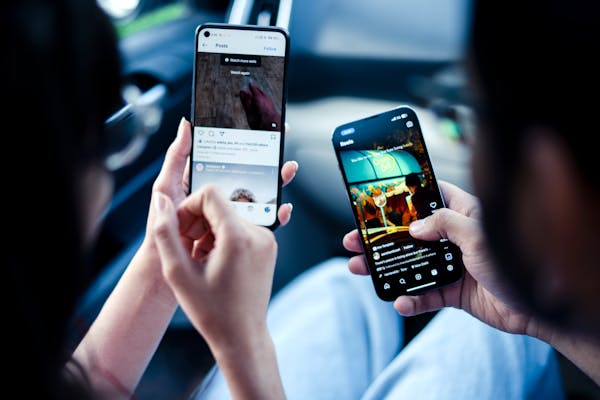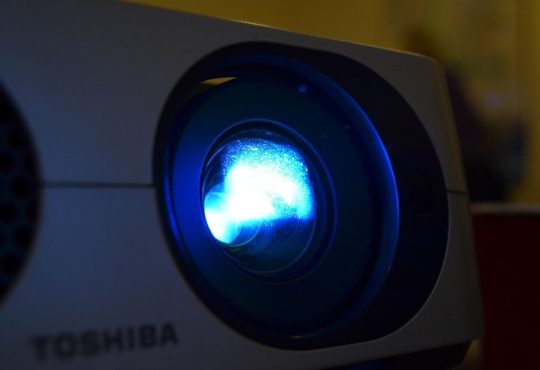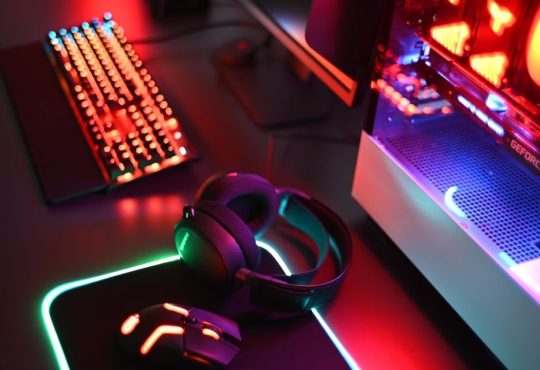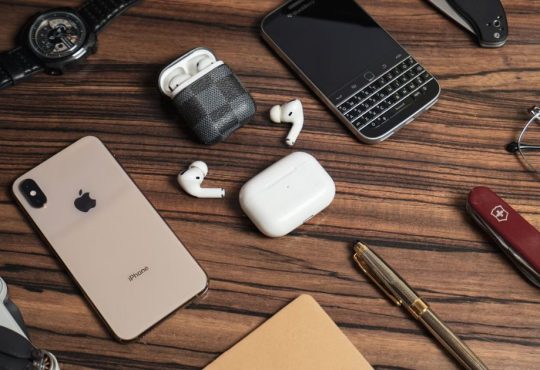In today’s rapidly evolving technological landscape, smartphones have become indispensable tools that shape our daily lives. Among the myriad of options available, two dominant players stand out: iPhone and Android devices. Understanding the difference between iPhone and Android is crucial for consumers looking to make informed decisions about their next smartphone purchase. This article delves deep into the various aspects that distinguish iPhones from Android devices, covering design, operating systems, hardware, ecosystems, security, customization, pricing, and more.
The difference between iPhone and Android devices extends beyond mere brand rivalry. It encapsulates a spectrum of choices that affect user experience, functionality, and personal preference. Whether you’re a tech enthusiast, a casual user, or someone looking to upgrade, understanding these differences can guide you toward a device that best suits your needs.
A Brief History
The rivalry between iPhone and Android dates back to the late 2000s. Apple’s introduction of the iPhone in 2007 revolutionized the smartphone industry with its intuitive design and robust ecosystem. Shortly after, Google launched Android, an open-source operating system, allowing various manufacturers to produce a wide range of devices. This competition has led to continuous innovation, giving consumers a plethora of choices.
Operating Systems: iOS vs. Android
At the core of the difference between iPhone and Android lies their operating systems: iOS and Android. These platforms dictate the user interface, app compatibility, security features, and overall user experience.
iOS: Apple’s Proprietary Ecosystem
iOS is Apple’s closed-source operating system, exclusively available on iPhones. Designed for seamless integration with Apple’s hardware and services, iOS is known for its smooth performance, stability, and user-friendly interface.
Key Features of iOS:
- Consistent Updates: Apple provides regular updates to all supported devices simultaneously, ensuring security patches and new features are promptly available.
- App Store Curation: The App Store is tightly regulated, leading to a higher standard of app quality and security.
- Seamless Integration: iOS offers seamless connectivity with other Apple devices like Macs, iPads, Apple Watch, and Apple TV.
- Privacy Focus: Apple emphasizes user privacy, implementing features like app tracking transparency and on-device processing for sensitive data.
Android: The Open-Source Powerhouse
Android, developed by Google, is an open-source operating system used by a multitude of manufacturers, including Samsung, Google, OnePlus, and Huawei. This openness allows for extensive customization and a wide range of device options.
Key Features of Android:
- Customization: Android offers extensive customization options, allowing users to personalize their devices with widgets, launchers, and themes.
- Variety of Devices: From budget to premium smartphones, Android caters to a broad audience with diverse hardware specifications.
- Google Integration: Deep integration with Google services like Google Assistant, Google Photos, and Google Drive enhances functionality.
- Flexibility: Users can sideload apps, use alternative app stores, and tweak system settings more freely compared to iOS.
Comparing iOS and Android
- User Interface: iOS provides a uniform and streamlined interface, while Android offers more flexibility in terms of layout and design.
- App Ecosystem: Both platforms boast millions of apps, but the App Store generally sees stricter app vetting compared to Google Play.
- Integration: iOS shines in integration within the Apple ecosystem, whereas Android excels in integrating with a wider array of third-party services and hardware.
- Updates: iOS users receive updates simultaneously, while Android updates can be delayed based on manufacturer and carrier schedules.
Hardware and Design
The hardware design and build quality significantly influence the difference between iPhone and Android devices. Both platforms offer a variety of designs, materials, and hardware capabilities tailored to different user preferences and budgets.
iPhone: Sleek and Premium Design
Apple is renowned for its commitment to premium build quality and sleek design aesthetics. Each new iPhone generation often introduces refined materials and innovative design elements.
Key Hardware Features of iPhone:
- Build Quality: iPhones typically feature aluminum or stainless steel frames with glass backs, exuding a premium feel.
- Design Consistency: Apple maintains a consistent design language, making each new model instantly recognizable.
- Processor Performance: Apple’s A-series chips are known for their high performance and efficiency, often outperforming competitors in benchmarks.
- Display Technology: iPhones use high-quality OLED or Super Retina displays, offering vibrant colors and deep blacks.
- Camera Integration: Apple’s cameras are tightly integrated with hardware and software, delivering impressive photography and videography capabilities.
Android: Diverse Hardware Offerings
Android devices come in a wide range of designs, sizes, and hardware configurations, catering to a broader audience.
Key Hardware Features of Android Devices:
- Variety: From sleek flagships to rugged phones, Android offers devices that suit different lifestyles and preferences.
- Customization: Manufacturers often add unique hardware features like foldable screens, stylus support, and multiple camera modules.
- Processor Diversity: Android devices use a variety of processors, including Qualcomm Snapdragon, MediaTek, and Samsung Exynos, leading to differences in performance and efficiency.
- Display Options: Android offers diverse display technologies, including AMOLED, LCD, and innovative foldable or dual-screen designs.
- Battery Capacity: Android phones often come with larger batteries and faster charging options, appealing to power users.
Comparing Build and Durability
- Material Quality: While both platforms use premium materials, Android’s diversity means quality can vary significantly between manufacturers and models.
- Durability: High-end Android devices and iPhones often feature water and dust resistance, but the level of durability depends on the specific model.
Ecosystem and Integration
The ecosystem surrounding a smartphone plays a crucial role in the user experience. The difference between iPhone and Android is evident in how each platform integrates with other devices and services.
Apple’s Ecosystem
Apple has built a tightly-knit ecosystem where all its devices and services work seamlessly together.
Key Components of Apple’s Ecosystem:
- iCloud: Offers cloud storage, synchronization, and backup services across Apple devices.
- Continuity Features: Handoff, Universal Clipboard, and AirDrop enable seamless transitions between iPhones, Macs, iPads, and Apple Watches.
- Apple Services: Services like Apple Music, Apple TV+, Apple Arcade, and Apple Pay are deeply integrated into the iOS experience.
- Hardware Integration: Devices like the Apple Watch and AirPods are optimized for performance and connectivity with iPhones.
Android’s Ecosystem
Android’s ecosystem is more fragmented due to its open nature, but it still offers robust integration with various services and devices.
Key Components of Android’s Ecosystem:
- Google Services: Integration with Google services like Google Drive, Google Photos, Google Assistant, and Google Home enhances functionality.
- Third-Party Integrations: Android supports a wide range of third-party devices, including smart home gadgets, wearables, and more.
- Cross-Platform Compatibility: Many Android apps and services are available across different platforms, including Windows and macOS.
- Flexibility: Users can mix and match devices from different manufacturers, choosing components that best fit their needs.
Comparing Ecosystem Advantages
- Seamlessness: Apple’s ecosystem offers a more seamless and unified experience, especially for users invested in multiple Apple products.
- Flexibility: Android provides greater flexibility in choosing devices and services from various manufacturers, catering to diverse preferences.
- Interoperability: While Apple’s devices are highly interoperable, Android’s interoperability relies on third-party standards and partnerships, which can vary in consistency.
App Availability and Store Policies
The availability of apps and the policies governing app distribution are significant factors in the difference between iPhone and Android.
App Store (iOS)
Apple’s App Store is the exclusive platform for downloading apps on iPhones. Apple maintains strict guidelines for app approval, focusing on quality, security, and user experience.
Key Aspects of the App Store:
- Curated Selection: Apps undergo a rigorous review process, ensuring higher quality and security standards.
- Monetization Policies: Apple takes a percentage of in-app purchases and subscriptions, influencing developer pricing strategies.
- Exclusive Apps: Some high-profile apps and games debut exclusively on iOS due to the platform’s lucrative user base.
- App Quality: The stringent review process often results in more polished and reliable apps.
Google Play Store (Android)
The Google Play Store is the primary app distribution platform for Android devices, but users can also install apps from third-party sources.
Key Aspects of the Play Store:
- Open Access: Easier app submission process allows a vast number of apps, leading to a more extensive selection but variable quality.
- Monetization Flexibility: Developers have more flexibility in pricing models and monetization strategies.
- Diverse Offerings: A broader range of apps, including those not available on iOS, thanks to the more lenient policies.
- Security Measures: While Google has improved its security protocols, the open nature means a higher risk of encountering malicious apps.
Comparing App Ecosystems
- Quality vs. Quantity: The App Store tends to have fewer apps but generally higher quality, while the Play Store offers a vast array of apps with varying quality.
- Exclusivity: Certain apps and games may be exclusive to iOS or Android initially, affecting user choice based on preferred platform.
- Developer Support: Developers may prioritize iOS for higher revenue potential, influencing the availability of certain apps.
Customization and User Interface
Customization options and user interface (UI) design play pivotal roles in defining the user experience. The difference between iPhone and Android is stark in how much users can tailor their devices to their preferences.
iOS Customization
Apple maintains a controlled environment for iOS, limiting extensive customization to preserve a consistent and intuitive user experience.
Customization Options in iOS:
- Home Screen Layout: Users can rearrange app icons and create folders but have limited control over widgets and system-wide themes.
- Wallpaper: Customizable backgrounds for home and lock screens.
- App Organization: The App Library organizes apps automatically, reducing the need for manual sorting.
- Minimalistic Themes: iOS offers limited themes, focusing on a clean and uniform aesthetic.
Android Customization
Android offers extensive customization capabilities, allowing users to personalize nearly every aspect of their device’s appearance and functionality.
Customization Options in Android:
- Widgets and Shortcuts: Users can place widgets and shortcuts anywhere on the home screen, providing quick access to information and apps.
- Launchers: Third-party launchers enable complete overhaul of the user interface, including icons, animations, and layout.
- Themes and Icons: Extensive theming options allow users to change system-wide colors, fonts, and icon packs.
- System Tweaks: Advanced users can modify system settings, install custom ROMs, and tweak performance parameters.
Comparing User Interface Flexibility
- Consistency vs. Flexibility: iOS prioritizes a consistent and streamlined interface, while Android emphasizes flexibility and personalization.
- Ease of Use: iOS’s limited customization can make it more user-friendly for those who prefer simplicity, whereas Android caters to users who enjoy tailoring their devices.
- Third-Party Enhancements: Android’s open nature allows for a wider range of third-party enhancements, from simple widgets to complete UI transformations.
Security and Privacy
Security and privacy are paramount concerns for smartphone users. The difference between iPhone and Android is evident in how each platform approaches these critical aspects.
iOS Security and Privacy
Apple places a strong emphasis on security and privacy, integrating multiple layers of protection within iOS.
Key Security Features of iOS:
- App Sandboxing: Each app operates in its own sandbox, preventing unauthorized access to system resources and other apps.
- Regular Updates: Prompt and consistent updates ensure that security vulnerabilities are patched swiftly.
- Biometric Authentication: Features like Face ID and Touch ID provide secure and convenient authentication methods.
- Data Encryption: Data stored on iPhones is encrypted by default, safeguarding user information.
- Privacy Controls: iOS offers granular privacy settings, allowing users to control app access to data like location, contacts, and photos.
Android Security and Privacy
Android has made significant strides in enhancing security and privacy, though its open nature presents unique challenges.
Key Security Features of Android:
- Google Play Protect: Scans apps for malware and suspicious behavior, offering a layer of protection for users.
- Biometric Authentication: Features like fingerprint sensors and facial recognition provide secure access to devices.
- Regular Security Updates: While improving, the fragmentation of Android can lead to delays in receiving updates across different devices.
- Permission Controls: Android allows users to manage app permissions, controlling access to sensitive data.
- Encryption: Most modern Android devices offer full-disk encryption to protect user data.
Comparing Security and Privacy Measures
- Update Consistency: iOS users receive timely updates across all devices, whereas Android updates can vary based on manufacturer and carrier.
- App Store Policies: iOS’s stringent app review process generally results in fewer malicious apps compared to Android’s more open Play Store.
- Privacy Features: Both platforms offer robust privacy controls, but Apple’s integrated approach often provides a more cohesive privacy experience.
Performance and Updates
The performance of a smartphone and the frequency of software updates are critical factors that differentiate iPhone and Android devices.
iOS Performance
Apple designs both the hardware and software for iPhones, ensuring optimized performance and efficiency.
Performance Aspects of iOS:
- Optimized Hardware-Software Integration: Custom-designed chips and tightly integrated software result in smooth performance and efficient resource management.
- Longevity: iPhones typically receive software updates for five to six years, ensuring sustained performance and security.
- App Optimization: Developers often optimize apps for iOS, leading to better performance and fewer bugs.
Android Performance
Android’s diverse hardware ecosystem means performance can vary widely between devices.
Performance Aspects of Android:
- Hardware Variability: High-end Android devices often feature top-tier processors and ample RAM, delivering performance comparable to iPhones.
- Software Optimization: While flagship Android devices are well-optimized, mid-range and budget models may experience performance limitations.
- Customization Impact: Extensive customization and third-party apps can sometimes impact system performance.
- Update Frequency: Performance updates depend on the manufacturer and model, with flagship devices receiving more consistent support.
Comparing Overall Performance
- Consistency: iPhones offer a consistent performance experience across all devices due to Apple’s controlled ecosystem.
- Variety: Android provides a wide range of performance options, from budget-friendly models to high-performance flagships.
- Longevity: iPhones generally have a longer lifespan in terms of software support, maintaining performance over extended periods.
Price Range and Value for Money
Price is a significant consideration for many consumers when choosing between iPhone and Android devices. The difference between iPhone and Android is also reflected in their pricing strategies and perceived value.
iPhone Pricing
Apple positions iPhones as premium devices, often commanding higher price points.
Pricing Characteristics of iPhones:
- Premium Pricing: iPhones typically start at higher price ranges compared to many Android counterparts.
- Resale Value: iPhones tend to retain their value better over time, offering better resale prospects.
- Limited Models: Apple releases a limited number of models each year, focusing on high-end features and quality.
- Consistent Value Proposition: Regardless of model, iPhones offer a consistent quality and performance level.
Android Pricing
Android devices cater to a broader audience with a wide range of pricing options.
Pricing Characteristics of Android Devices:
- Diverse Price Points: From budget-friendly options to premium flagships, Android offers devices for every budget.
- Competitive Features: Many mid-range Android phones offer features comparable to high-end devices at a fraction of the cost.
- Frequent Discounts: Android devices often see more frequent sales and discounts, enhancing value for money.
- Variety of Choices: The wide range of manufacturers allows consumers to find devices that offer the best balance of price and features.
Comparing Value for Money
- Initial Cost: Android offers more affordable options, making it accessible to a wider audience, while iPhones are positioned as premium purchases.
- Long-Term Value: iPhones may offer better long-term value due to sustained software support and higher resale value.
- Feature Allocation: Android devices can provide similar or even superior hardware features at lower prices, depending on the model.
Camera Quality and Features
Camera performance is a pivotal feature for many smartphone users. The difference between iPhone and Android in camera capabilities has been a key battleground for both platforms.
iPhone Camera Features
Apple emphasizes camera quality and user experience in its iPhones, often setting industry standards.
Key Camera Features of iPhones:
- Consistent Performance: iPhones are known for their consistent photo and video quality across various lighting conditions.
- Advanced Processing: Apple’s image signal processor enhances photo quality, enabling features like Smart HDR, Night mode, and Deep Fusion.
- Video Capabilities: iPhones offer high-quality video recording options, including 4K resolution, Dolby Vision HDR, and cinematic mode.
- User-Friendly Interface: The camera app is intuitive, providing easy access to advanced features without overwhelming the user.
- Ecosystem Integration: Seamless integration with other Apple services like iCloud Photos and AirDrop enhances the photography experience.
Android Camera Features
Android devices offer a diverse range of camera technologies, often pushing the boundaries with innovative features.
Key Camera Features of Android Devices:
- Hardware Diversity: Android phones may include multiple camera sensors, such as ultra-wide, telephoto, macro, and depth sensors.
- High Megapixel Counts: Some Android devices boast exceptionally high megapixel cameras, enabling detailed photography.
- Advanced Features: Features like periscope zoom, variable aperture, and computational photography are commonly found in flagship Android phones.
- Customization Options: Android allows more customization in camera settings, catering to photography enthusiasts who seek greater control.
- Third-Party App Support: A broader range of camera apps and editing tools are available, enhancing the creative possibilities.
Comparing Camera Performance
- Image Quality: Both platforms offer exceptional camera quality, but the best results often depend on the specific device model.
- Innovation: Android manufacturers frequently introduce cutting-edge camera technologies, while Apple focuses on refining and perfecting existing features.
- User Experience: iPhones provide a more streamlined and user-friendly camera experience, whereas Android offers greater flexibility and customization for advanced users.
Battery Life and Charging
Battery life and charging capabilities are crucial factors influencing user satisfaction. The difference between iPhone and Android in this area varies based on device models and manufacturer innovations.
iPhone Battery Life and Charging
Apple has made significant strides in optimizing battery life and charging for iPhones, though certain limitations remain.
Battery Features of iPhones:
- Efficient Hardware: Apple’s optimized hardware and software contribute to efficient battery usage.
- Battery Management: iOS includes features like Low Power Mode to extend battery life when needed.
- Charging Options: iPhones support fast charging with compatible adapters and wireless charging via MagSafe or Qi standards.
- Battery Capacity: While iPhones traditionally have smaller battery capacities compared to some Android counterparts, optimization often compensates for this.
Android Battery Life and Charging
Android devices often prioritize battery life and offer diverse charging solutions to cater to various user needs.
Battery Features of Android Devices:
- Larger Battery Capacities: Many Android phones come with larger batteries, providing extended usage without frequent recharging.
- Fast Charging: Android manufacturers frequently incorporate advanced fast charging technologies, including wired and wireless options.
- Reverse Wireless Charging: Some Android devices support reverse wireless charging, allowing them to charge other devices like earbuds or smartwatches.
- Battery Customization: Android offers more options for managing battery usage, including detailed battery statistics and app-specific controls.
Comparing Battery Performance
- Longevity: High-end Android devices often outperform iPhones in raw battery capacity, leading to longer usage times.
- Charging Speed: Android devices typically offer faster wired and wireless charging options, reducing downtime.
- Battery Optimization: iPhones benefit from software optimization, ensuring efficient battery usage despite smaller capacities.
The difference between iPhone and Android encompasses a wide array of factors, each influencing user experience in unique ways. iPhones offer a cohesive and streamlined ecosystem, premium build quality, consistent performance, and a strong emphasis on privacy and security. On the other hand, Android devices provide unparalleled customization, a vast selection of hardware options, competitive pricing, and innovative features that cater to diverse user preferences.
Choosing between an iPhone and an Android device ultimately depends on individual priorities:
- Choose iPhone if you value a seamless ecosystem, consistent updates, strong privacy controls, and premium design.
- Choose Android if you prefer extensive customization, a wide range of device options, competitive pricing, and cutting-edge hardware innovations.
Both platforms continue to evolve, pushing each other towards greater heights, ensuring that consumers benefit from continuous advancements in smartphone technology. By understanding the difference between iPhone and Android, users can make informed decisions that align with their personal and professional needs, maximizing the value and satisfaction derived from their smartphone experience.






